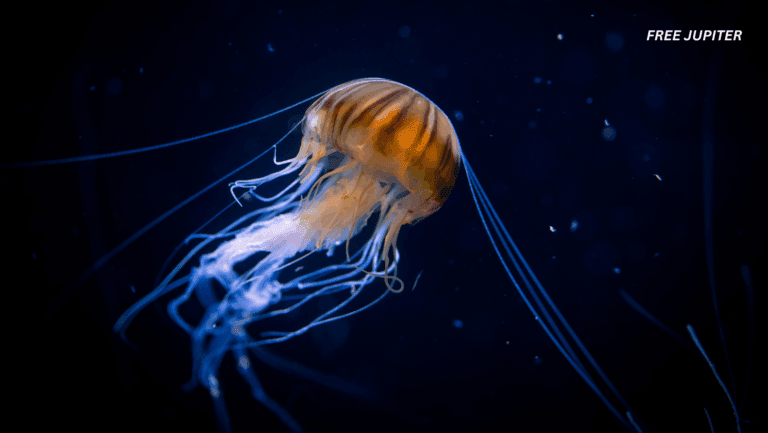Friendly Note: FreeJupiter.com shares general info for curious minds 🌟 Please fact-check all claims—and always check health matters with a professional 💙
Ever watched a toddler go from babbling to forming sentences in what feels like a blink? Or seen a kid pick up a new game or dance move after just a few tries? It’s a bit like magic—especially when you compare it to how long it takes an adult to learn something like a second language or advanced math. But is this speedy learning just about youthful enthusiasm, or is there something in the way a child’s brain is wired that gives them an edge?
Turns out, there is a scientific reason behind this learning superpower—and it all starts with how the brain grows and adapts.
The Brain’s Secret Superpower: Neuroplasticity
The big reason kids learn so quickly is something called neuroplasticity. That’s just a fancy term for the brain’s ability to change and adapt based on new experiences. Think of it like wet clay—when you’re young, your brain is soft and moldable, ready to form all kinds of connections. As you get older, that clay starts to set. It’s still changeable, just a bit more effort is required.
During early childhood—especially before age five—the brain is at its most flexible. Every sound, sight, touch, and emotion a child experiences is shaping their neural wiring. Because so much of the world is new to them, their brain is constantly rewiring and adjusting in response. It’s like being in a mental bootcamp for curiosity and adaptation.
Are Kids Really Like Sponges?
You’ve probably heard the phrase, “Kids are like sponges.” And it’s not entirely wrong—but it’s also not quite that simple. According to Debbie Ravenscroft, an expert in early childhood studies from the University of Chester in the UK, kids aren’t learning machines with magical powers. Their brains are just in a prime state for building connections quickly.
Sure, in many areas—like solving complex problems or managing emotions—kids lag behind adults. But in certain areas, especially in those first few years, being young gives them an edge. That edge is a combination of biology, environment, and pure human drive to explore.
Read more:
The Language Advantage
One place this shows up big time? Language learning. Children have a natural ear for sounds and rhythms in speech. By tuning into the patterns of their native language early on, they can often speak fluently by age four. And when it comes to learning multiple languages, young kids usually handle it with surprising ease.
Why? Researchers believe babies are actually born able to hear and distinguish sounds from all languages on Earth. That means whether they’re born in Tokyo or Toronto, their brains are ready to soak up whichever language—or languages—they’re surrounded by. This special ability fades with age, which is why adults often struggle with picking up new languages or accents.
In fact, if certain sounds or tones aren’t heard regularly before puberty, they become almost impossible to recognize later in life. So when it comes to language, the clock is ticking—and kids are naturally ahead of the game.
Flexibility of Thought
Young brains aren’t just better at hearing and mimicking sounds—they’re also more mentally flexible. This cognitive flexibility lets them switch between different ideas quickly or juggle multiple thoughts at once. It’s a bit like mental gymnastics, and kids are surprisingly agile.
Combined with neuroplasticity, this gives children the ability to take in new ideas, test them out, and either keep them or toss them, depending on what works. Adults, while still capable of learning, often take longer because their brains are more set in their ways—like updating an old computer instead of booting up a new one.
The GABA Factor: A Brain Chemical Twist
Here’s where things get even more interesting. A 2022 study published in Current Biology looked at a brain chemical called GABA—short for gamma-aminobutyric acid. This chemical helps the brain “lock in” new information, making learning stick.
The researchers found that after a learning activity, kids had a sudden spike in GABA, which helped them retain what they’d learned even after the training ended. Adults, on the other hand, didn’t show this spike. Their GABA levels stayed the same, which might explain why children often retain new knowledge faster and more efficiently than adults.
In plain terms: kids don’t just learn fast—they’re also better at holding onto what they learn.
Read more:
Fast Learners Still Need Support
Even with all this brain power, kids aren’t learning in a vacuum. They still need caring adults, stimulating environments, and meaningful interactions to truly thrive. Ravenscroft emphasizes that while children have the capacity to learn quickly, they need guidance and nurturing to make the most of it.
Simple things like reading to a baby, talking about what you see on a walk, or answering their endless “why?” questions all help build brain connections. These experiences don’t just teach facts—they build a child’s love of learning and shape how they see the world.
The Power of Early Years
From birth to age five, the brain is in its most intense development phase. During this time, children’s brains are buzzing—forming connections at lightning speed as they figure out how to move, speak, think, and connect with others.
This period is often called a “critical window,” because what children are exposed to during these years can shape how they learn and grow for the rest of their lives.
It’s also a time when kids are still developing important life skills, like managing emotions or understanding other people’s feelings. For instance, it’s totally normal for toddlers to struggle with tantrums—not because they’re misbehaving, but because their “social brain” is still under construction.
Rushing Isn’t the Goal
In today’s fast-paced world, it’s tempting to push children to learn more, faster. But Ravenscroft warns against speeding things up. Real learning takes time, and children need space to absorb what they’re taking in.
The best learning environments are ones where kids can explore at their own pace, ask questions, make mistakes, and figure things out through play and conversation. It’s not just about facts and figures—it’s about building a brain that loves to learn.
Read more:
Final Thoughts: Built to Learn, Wired for Wonder
So, why do children seem to learn faster than adults? Their brains are built for it—full of curiosity, flexibility, and a biological toolkit that’s designed to absorb the world around them. But that natural talent still needs support, patience, and plenty of play.
As adults, we might not have the same brain plasticity we had as kids, but understanding how children learn can help us teach better, parent more mindfully, and maybe even recapture a bit of that childlike wonder ourselves.










